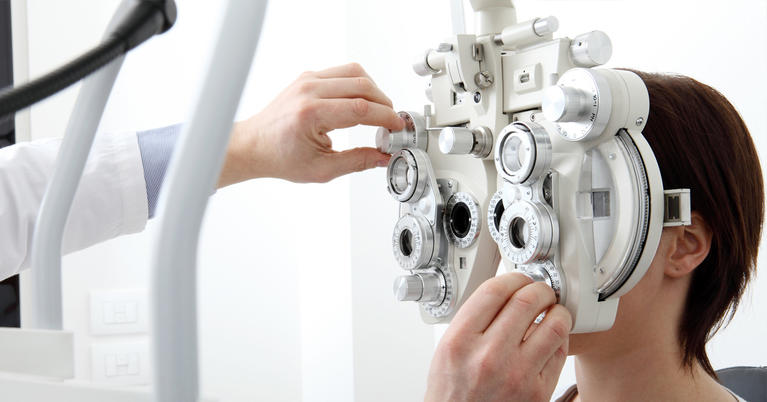Discover a Neurologist in Andalusia: Specialized Clinics and Care Providers
Discover a Neurologist in Andalusia: Specialized Clinics and Care Providers
Blog Article
The Benefits And Drawbacks of Various Refractive Surgeries for Enhanced Eyecare

LASIK Surgical Procedure
LASIK surgical treatment is a commonly carried out refractive procedure that aims to fix vision issues such as astigmatism, nearsightedness, and farsightedness. Throughout the procedure, a slim flap is created on the cornea, and a laser is used to improve the underlying tissue, remedying the refractive error.
One of the key advantages of LASIK surgery is the fast improvement in vision experienced by numerous clients. It is necessary for people taking into consideration LASIK surgical procedure to undertake a detailed evaluation by an eye treatment specialist to determine if they are ideal candidates for the procedure.
PRK Treatment
The PRK procedure, additionally known as Photorefractive Keratectomy, is a type of refractive surgical treatment that intends to fix vision issues similar to LASIK surgery. Unlike LASIK, which entails producing a flap in the cornea, PRK functions on the surface area layer of the cornea.
One of the advantages of PRK over LASIK is that it gets rid of the danger of flap-related issues because no flap is produced during the surgical procedure. This can be useful for individuals with slim corneas or those associated with contact sporting activities where eye injury is a possibility. However, the recovery time for PRK is normally longer contrasted to LASIK, as the outer layer of the cornea requires time to regenerate after the procedure. In spite of the longer recovery period, PRK can be an appropriate alternative for people seeking vision adjustment surgical procedure.
SMILE Surgical Procedure
An innovative refractive surgical treatment strategy getting appeal in the area of ophthalmology is SMILE Surgical treatment. Small Cut Lenticule Extraction (SMILE) is a minimally invasive treatment that corrects vision by reshaping the cornea making use of a femtosecond laser. Unlike conventional LASIK surgical treatment, SMILE Surgical procedure entails producing a tiny cut in the cornea to draw out a lenticule, which causes less disturbance to the corneal framework and possibly much faster healing times.
One of the primary benefits of SMILE Surgical treatment is its capability to treat nearsightedness (nearsightedness) and astigmatism with high accuracy, bring about excellent aesthetic outcomes for clients. The minimally invasive nature of the procedure additionally decreases the threat of complications such as completely dry eye disorder, making Home Page it a positive choice for individuals looking for refractive surgical treatment.

LASEK Technique
Having checked out the advantages and factors to consider of SMILE Surgical procedure, one more notable refractive surgical procedure technique worth examining is the LASEK Technique. LASEK, which represents Laser-Assisted Subepithelial Keratectomy, is a form of laser eye surgical procedure that aims to remedy refractive errors such as nearsightedness (nearsightedness), hyperopia (farsightedness), and astigmatism.
Unlike LASIK, LASEK does not include creating a corneal flap. Rather, during a LASEK treatment, the doctor uses a diluted alcohol option to loosen the slim outer layer of the cornea, recognized as the epithelium.
Among the main benefits of LASEK is that it can be suitable for people with slim corneas that may not be excellent prospects for LASIK. In addition, LASEK usually causes minimal post-operative pain and a quicker healing time compared to PRK. The aesthetic healing process with LASEK might be somewhat longer than with LASIK.
Implantable Call Lenses
Implantable Get in touch with Lenses supply a long-lasting vision correction option for individuals seeking an option to traditional get in touch with lenses or glasses. These lenses, also known as phakic intraocular lenses, are operatively put right into the eye to correct refractive mistakes such as myopia (nearsightedness), hyperopia (farsightedness), and astigmatism. cardiologist andalusia. Unlike conventional contact lenses that rest on the surface area of the eye, implantable contact lenses function within the eye itself, supplying clear vision without the need for day-to-day maintenance or removal
Among the vital advantages of implantable get in touch with lenses is their permanence. Once inserted, they can continue to be in the eye indefinitely, offering consistent and stable vision modification. Furthermore, these lenses can be an excellent alternative for individuals who are not good prospects for laser eye surgical treatment or who prefer a reversible vision modification treatment.
Nevertheless, implantable get in touch with lenses do bring some risks, including the potential for cataracts or raised eye stress. It is important for individuals considering this choice to seek advice straight from the source from an eye treatment professional to determine if implantable call lenses are the right option for their particular needs and eye health.
Verdict
In conclusion, each kind of refractive surgical procedure has its very own benefits and downsides. LASIK surgical procedure is preferred for its quick healing time, while PRK treatment may appropriate for individuals click here to find out more with slim corneas. SMILE surgery provides very little discomfort throughout the treatment, however LASEK strategy may have a longer recovery process. Implantable call lenses give a choice for those who are not ideal candidates for traditional surgical procedures. Individuals should seek advice from with their eye care provider to figure out the finest alternative for their specific needs.

Overall, SMILE Surgical procedure presents an encouraging alternative for people looking to enhance their vision through refractive surgical procedure.
Report this page